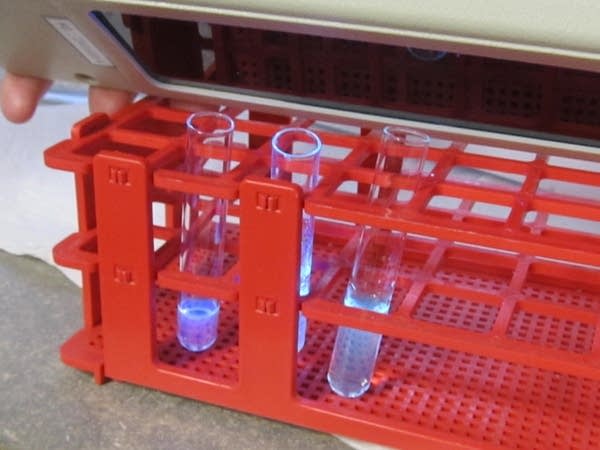Augsburg’s greener way to do chemistry


I've just been introduced to green science.
I'm in Prof. Michael Wentzel's organic chemistry class, and he's showing his students how to do chemistry in a more environmentally friendly way -- "Benign by design," as he puts it.
They're reproducing a fluorescent substance found in scorpions -- but doing it without generating all the waste that's usually produced in such chemical processes.

Wentzel uses a combination of heating and mixing to enable his components to form chemical bonds, thus avoiding the use of solvents -- and thus taking one more chemical out of the equation.
Create a More Connected Minnesota
MPR News is your trusted resource for the news you need. With your support, MPR News brings accessible, courageous journalism and authentic conversation to everyone - free of paywalls and barriers. Your gift makes a difference.
And to get his components to react with each other more efficiently, Wentzel uses a polymer styrene catalyst instead of the usual toxic mineral acid.
The professor tells me:
"It's how we should train scientists now. Companies want scientists that know the way to design chemistry to be more environmentally friendly. Chemistry doesn't need to be a fixer of problems. It can be a way to never have the problems in the first place."